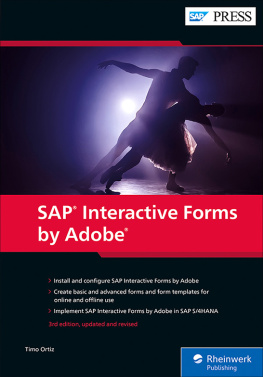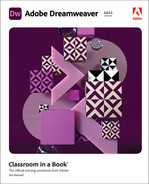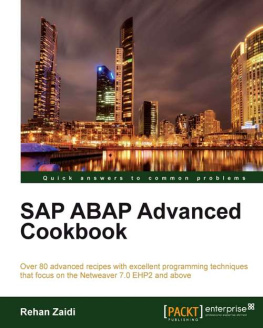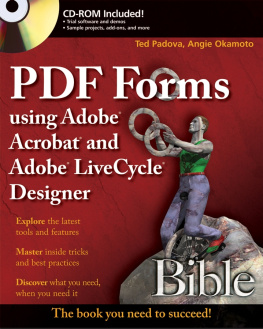Field trips were the best part of my elementary school experience. Throughout the years, my class saw a wide variety of sights: a pulley that created floor-to-ceiling bubbles at the science museum, rescued owls and eagles at a local rehabilitation habitat, penguins and tropical fish at the aquarium, medieval weapons in a historical armory, and hand-churned butter at a colonial village reenactment. But the reward of a field trip required an important administrative task: remembering to ask my parents to sign the permission slip beforehandand making sure I never lost that all-important piece of paper in the constant shuffle of lunch menus and worksheets.
Gone are the days where permission slips get squashed in the bottom of backpacks or packed into manila folders. Although digital, interactive forms have changed how we collect data and made it easier and faster to get information where its needed, the fact remains that making sure the right people fill out the right form in the right way is incredibly important. That starts with good form design. If youre on a mission to create clear, well-designed forms that are easy and practical to fill out, youre in the right place.
So what did you think about SAP Interactive Forms by Adobe ? Your comments and suggestions are the most useful tools to help us make our books the best they can be. Please feel free to contact me and share any praise or criticism you may have.
Notes on Usage
This e-book is protected by copyright . By purchasing this e-book, you have agreed to accept and adhere to the copyrights. You are entitled to use this e-book for personal purposes. You may print and copy it, too, but also only for personal use. Sharing an electronic or printed copy with others, however, is not permitted, neither as a whole nor in parts. Of course, making them available on the internet or in a company network is illegal as well.
For detailed and legally binding usage conditions, please refer to the section .
This e-book copy contains a digital watermark , a signature that indicates which person may use this copy:
Notes on the Screen Presentation
You are reading this e-book in a file format (EPUB or Mobi) that makes the book content adaptable to the display options of your reading device and to your personal needs. Thats a great thing; but unfortunately not every device displays the content in the same way and the rendering of features such as pictures and tables or hyphenation can lead to difficulties. This e-book was optimized for the presentation on as many common reading devices as possible.
If you want to zoom in on a figure (especially in iBooks on the iPad), tap the respective figure once. By tapping once again, you return to the previous screen. You can find more recommendations on the customization of the screen layout on the .
Introduction
In 2022, SAP and Adobe celebrate the 20th anniversary of their partnership. In recent years, teams on both sides have been working on new versions of SAP Interactive Forms by Adobe. Therefore, this book has been revised and is now available in its third edition.
The success story began in 2002, when SAP SE and Adobe Systems launched a strategic partnership that continues to this day. Their goal was and is to integrate interactive forms and Adobes printing and design expertise into the SAP NetWeaver technology platform and make them available to customers via SAPs business applications.
Adobe already had the necessary technology at that time with the Adobe LiveCycle product group, the core area of which is the conversion of form templates and corresponding data into different output formats: printer languages such as printer definition language (PDL) or even PDF documents. In addition to the generation of output formats, the focus was on the design of forms, and the Adobe portfolio in this area already included Adobe LiveCycle Designer, an interactive graphical tool that allows the creation and editing of the layout of forms.
SAP brought the experience gained from the development of SAPscript and smart forms to the integration of the tools into SAP NetWeaver. The basic approach for integrating Adobe technology into SAP applications was adopted from smart forms, which made it easier for most developers to move to those new technologies.
Today, development responsibilities are largely split between Adobe and SAP. While Adobe continues to develop the core technology, SAP improves the integration and frameworks built on top of the technology.
SAP S/4HANA also marked the beginning of a new chapter. Here, the development of the new form templates is no longer integrated into the SAP NetWeaver environment. In addition, Adobe fragments capabilities were introduced to be used in master and content form templates. The data supply for these new fragment-based form templates is handled via SAP Gateway services. Thus, a new era is currently beginning for experienced form developers. This is also made clear by the fact that a new type of output control, based on the Business Rules Framework plus (BRFplus), has been introduced for SAP S/4HANA. The new output control and the new form templates will gradually replace and supersede all previous frameworks and form templates. In addition, with SAP S/4HANA, more and more functions will be outsourced to SAP Fiori apps. In addition, Adobe Document Services (ADS) for processing forms will now also be provided as a cloud solution with the new SAP Forms service by Adobe.
So now is the right time to familiarize yourself with this technology. By reading this book, youll be well on your way to doing so.
The advantages of PDF-based print forms technology are obvious: In addition to pure print output, the generation of interactive PDF forms(i.e., PDF files) with interactive form fields when opened with Adobe Acrobat Readerenable further possible uses. Interactive forms are used in various SAP solutions; for example, numerous examples can be found for SAP Business Suite in the areas of financials and human capital management. SAP Customer Relationship Management (SAP CRM), for example, has also delivered an interactive form for lead management by a partner company as a standard since version 5.0.








